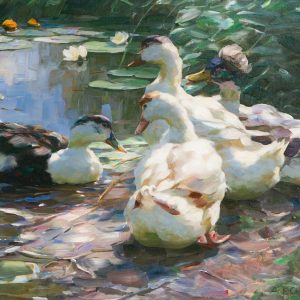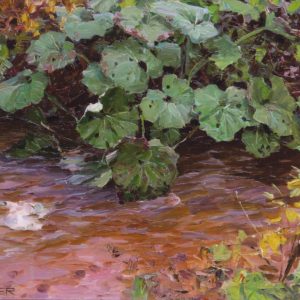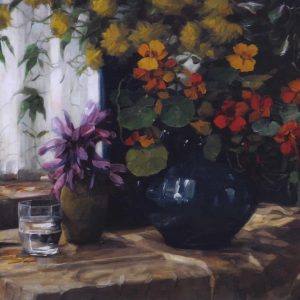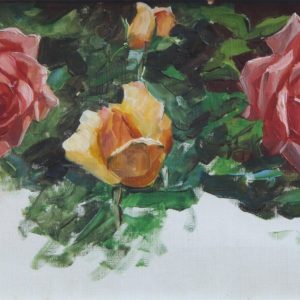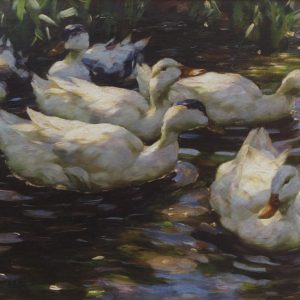
Alexander Koester
1864 Neustadt – 1932 Munich
Short information about the artist
Alexander Koester has become known on the international art market as a painter of white ducks on colourful shimmering waters, which has earned him the name “Duck-Koester”.
Videos about the artist
More information about the artist
Alexander Koester has become known on the international art market as a painter of white ducks on colourful shimmering waters, which has earned him the name “Duck-Koester”.
Biography
He was born in Bergneustadt (Gummersbach district) as the son of a shoe manufacturer who initially did not want to know anything about his child’s artistic ambitions. Only after an apprenticeship as a pharmacist was it allowed to start studying art at the Karlsruhe Academy in 1885, where Koester was trained by C. Hoff and C. Meyer, both of whom belonged to the Düsseldorf School of Painting, until 1896. The first genre paintings were made while he was still at the academy and still clearly show the influence of the Düsseldorf School of Painting.
Duck motifs
After completing his studies, Koester moved to Klausen, where numerous works were created directly from nature. In doing so, he discovers an object of study for himself that will keep him busy for another thirty years in a wide variety of ways: the duck. Shortly before the turn of the century, Koester exhibited one of his duck motifs for the first time. The success story began at the latest in 1900 with a sensational purchase by Kaiser Wilhelm II.
Honors and international exhibitions
Two years later the painter received the Silver State Medal in Salzburg and the gold medal in Berlin in the same year. English galleries are beginning to take an interest in Koester. In 1904 the painter was honored with the gold medal at the world exhibition in St. Louis, USA. In 1907 the King of Italy bought one of his works. Between 1908 and 1912 Koester’s duck paintings can be seen regularly in London, Paris and Pittsburgh, USA.
Lake Constance
Between 1910 and 1914, at the height of his artistic recognition, Alexander Koester spends a lot of time on Lake Constance. In addition to the duck paintings, Koester had now also discovered the pure landscape as a motif, which he brought onto the canvas in a modern and bright color scheme. During the war Koester stayed temporarily in Dießen am Ammersee and settled there. Dort widmet er sich vorwiegend der Darstellung von Blumenstillleben.
Museums and collections
His works are scattered in private collections and museums on several continents. An “evening sun” was in the possession of Kaiser Wilhelm II, “ducks in rest” was acquired by the King of Italy. Museums in Breslau, Chemnitz, Dessau, Graz and Munich secured his paintings. The majority of the estate is now kept in the Neue Pinakothek in Munich.
